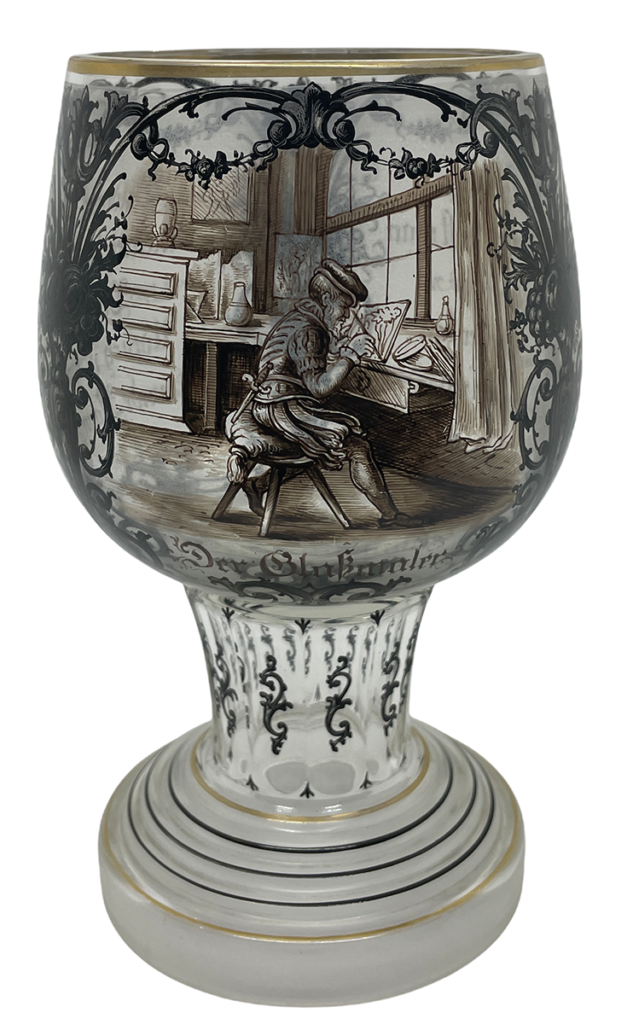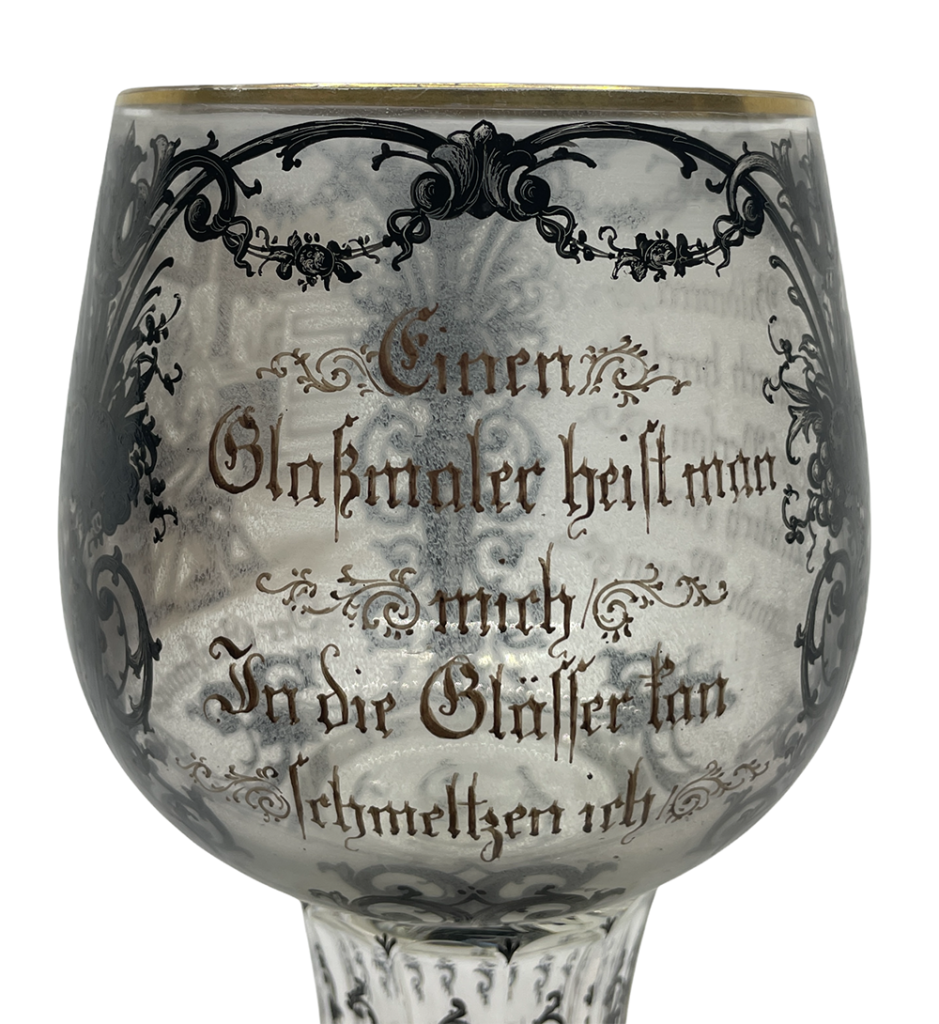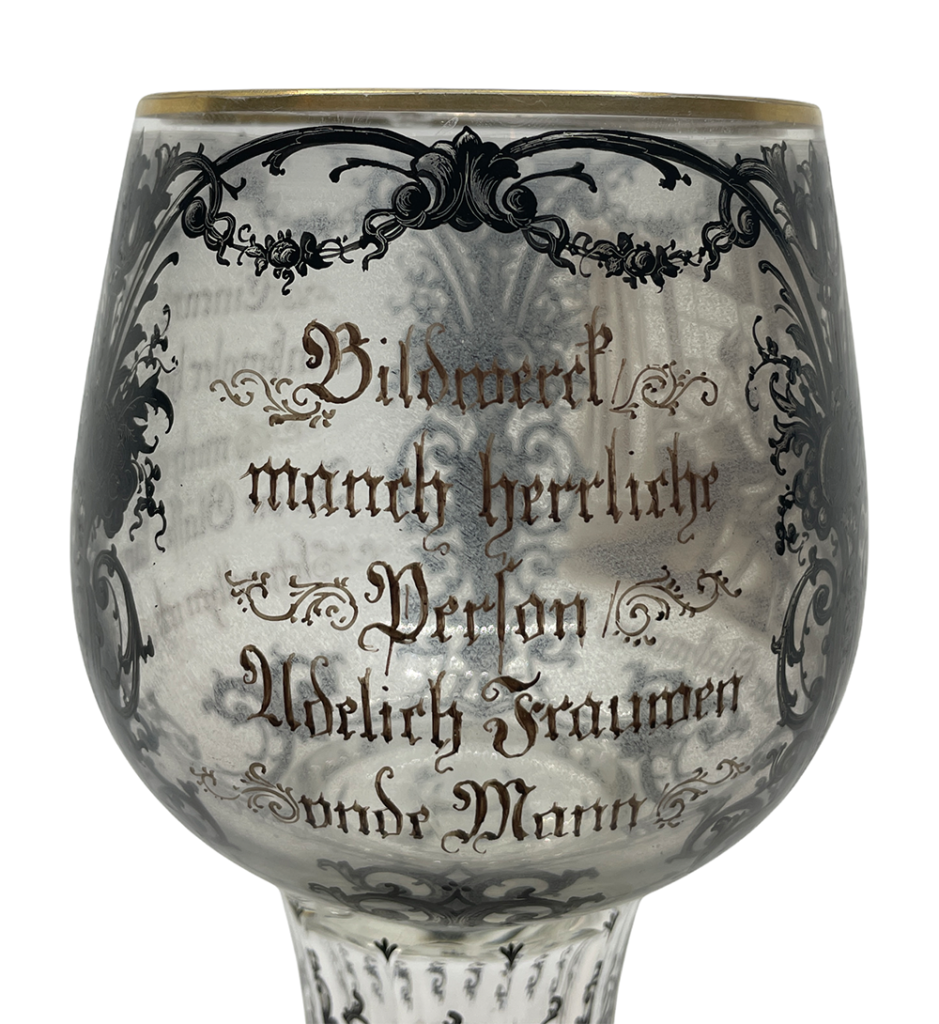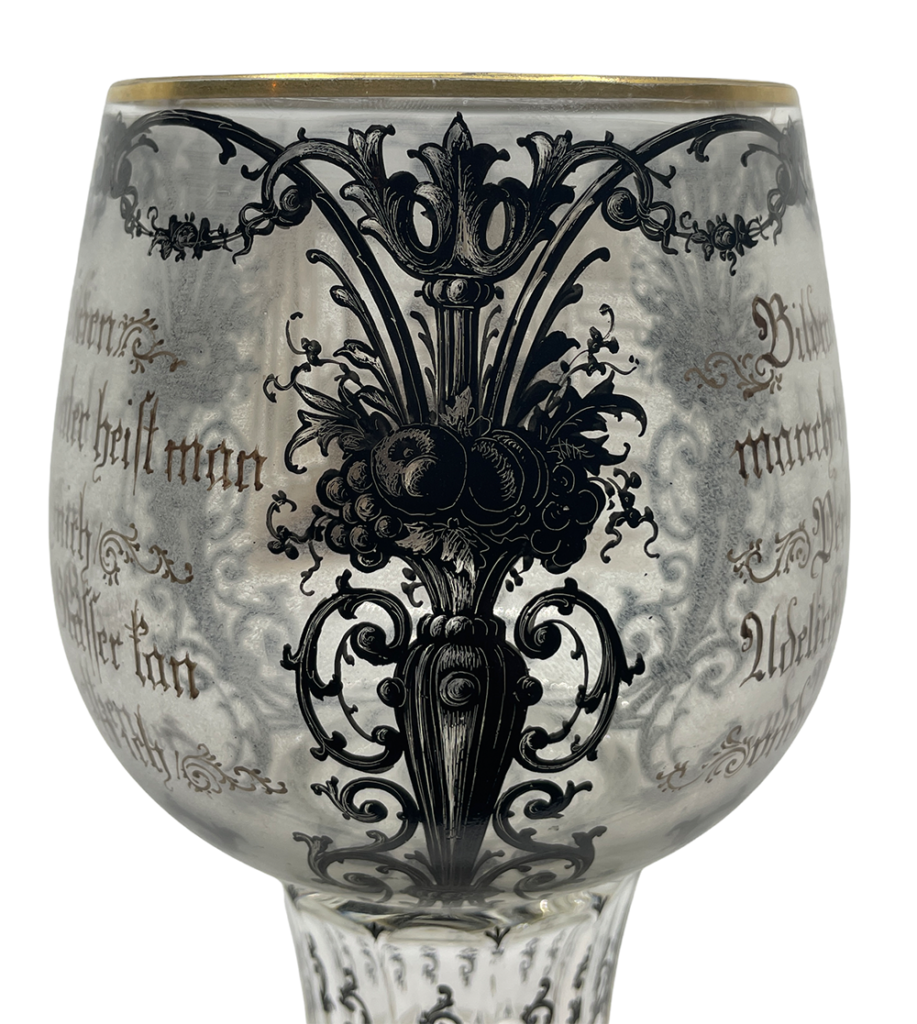
6.75in (17.5cm) high
Unique in its own right, and a super rare type. That’s the best way to describe what I found on a dusty shelf of an antiques shop last time I was in Berlin. It’s not my usual sort of thing at all, but it’s made from and connected to glass, the quality shouted out, and there’s clearly a story behind it. I had to have it!
A colourless goblet is hand-painted in black and brown enamels with three panels separated by Baroque floral, foliate and architectural frames. The main, beautifully rendered, scene shows a painter working in a studio at an easel on a desk, and bears the title Der Glaßmaler (The Glass Painter) underneath. The remaining two panels contain German words, in the manner of verse, exquisitely painted in the traditional German ‘Fraktur’ or ‘Gothic’ font. The exterior ‘background’ of the bowl has been made matte with a light treatment of acid, and the rim, facet-cut stem, and stepped foot bear gilding and further black enamelled details.
My rudimentary German helped with some of the German text, but I required my (German born) partner to translate the rest – and even he struggled a bit. So, first, the German text – Einen / Glaßmaler heist man / Mich / In die Glässer Inn / Schmeltzen ich / Bildwerd / Manch herlliche / Person / Udelich Fraumen / Unde Mann


Between the two of us, we got to this – I’m being called a glass painter. Into the glasses I can melt picture work [of] some esteemed person [,] nice women and man.

Some of the words are unusual because they’re not really German, or are slightly corrupted German. So, for example, Inn isn’t really a German word. Bildwerd is correctly spelt Bildwerk, as in ‘picture work’, although bildwerk can also mean sculpture. Fraumen does translate as ‘women’, but Frauen is more correct. Unde should really be und (and). This implies that German literacy was clearly not his strong point, or else he spoke a regional dialect. However, if you say the German words in the right cadence or rhythm, they almost sound like a rhyme, so he had at least some talent at writing.

The room in the main scene is fantastically detailed, with a window with a curtain, brushes, vases, bottles and preparatory drawings on furniture, and shading where it should be. Great attention has been paid to the glass painter himself, especially the clothing. My feeling is that the Medieval style of clothes is too early for the style of the goblet, which looks to me to date from around 1880, so some ‘romantic’ poetic license had been taken.
So it’s clear what it’s about, but what was it for? I love a mystery more than I love a story! My feeling is that it’s an advertising piece produced by a Southern German or Bohemian glass enameller or glass painter to showcase his skills and services. The style of the goblet and of the schwartzlot black enamelling suggests that it was produced by Josef Lenhardt or his workshop, which was in Steinschonau. The accuracy and detail of the black frames is superb, as is the level of detail of the glass painter at work. Many decorators of ceramics and glass, certainly in Central Europe, lived outside factories and were self-employed working from home, so some may have felt the need to produce something like this to show prospective clients when all the finished pieces had been given back. It could even have been an ‘apprentice piece’, produced when – or shortly after – an apprentice had completed his apprenticeship and passed on into the world of work.
I can’t find another example of this type of decoration anywhere, and nor have I seen one before. Have you? A rare thing indeed – and a delightful one!

